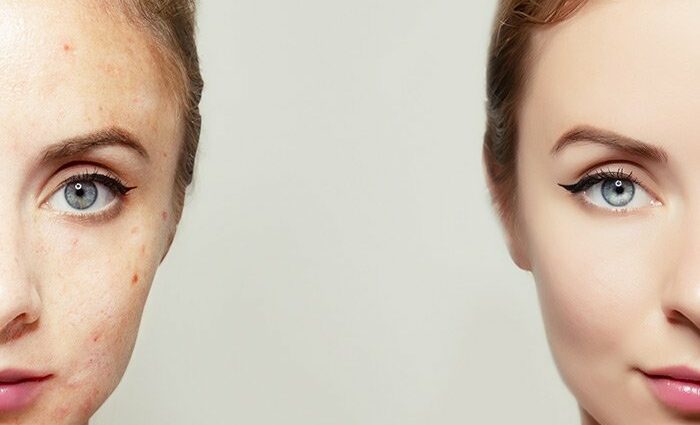Complementary approaches to acne
Apdorojimas | ||
cinkas | ||
Melaleuca essential oil. | ||
Chinese pharmacopoeia, food approaches | ||
Oats (straw), inactive brewer’s yeast, probiotics (active brewer’s yeast) | ||
Varnalėša | ||
Cinkas. Several studies conducted during the 1970s and 1980s indicate that taking zinc supplements can improve the appearance of acne. More recently, in a double-blind, placebo-controlled study involving 332 subjects, zinc gluconate (a dose equivalent to 30 mg of elemental zinc per day) taken for 3 months reduced the number of lesions by 75%. in 31% of subjects3. The oral antibiotic (minocycline in this case) was, however, significantly more effective in reducing the number of lesions in 63,4% of participants.
Dozavimas: Take 30 mg of elemental zinc per day in the form of gluconate.
Melaleukos eterinis aliejus (Melaleuca alternifolia). The essential oil of tea-tree has an antibacterial effect in vitro. Two clinical trials suggest it helps reduce the number of acne lesions4,5. In one of these tests, a gel containing 5% essential oil of melaleuca had an effectiveness comparable to that of a lotion containing 5% of benzoyl peroxide.4. The effects of melaleuca took longer to appear, but the essential oil had fewer side effects than peroxide treatment.
Oats (straw) (Avena sativa). Commission E recognizes oatmeal baths (psn) in the treatment of skin diseases caused by excessive activity of the sebaceous glands7. These baths could be useful in case ofaknė back, chest or forearms. Straw is used, i.e. the dried aerial parts of the plant.
Dozė
Prepare an infusion of 100 g of oat straw in 1 liter of boiling water and pour into the bath water.
Mielės. Brewer’s yeast is a microscopic fungus of the type sacharomyces. Commission E approves the use of brewer’s yeast supplements neveiklus in the treatment of chronic forms of acne8. Supplements naturally contain high amounts of B complex vitamins.
Dozė
Take 2 g, 3 times a day, with food.
probiotikai. The German Commission E has also authorized the use of active brewer’s yeast (also called “live” yeast) Saccharomyces boulardii as an adjuvant treatment for certain chronic forms of acne.
Dozė
Peržiūrėkite mūsų probiotikų lapą.
Varnalėša. Based on traditional usage, several authors recommend the use of cleansing plants, such as burdock, to treat acne. These plants, generally bitter, stimulate the liver and facilitate the elimination of toxins and wastes by the body. The purifying effects of burdock are well known.
Dozė
Take 1 g to 2 g of dried root powder, in capsule, 3 times a day. One can also boil over low heat from 1 g to 2 g of dried powder in 250 ml of water. Drink one cup 3 times a day and apply in the form of compresses on the affected parts.
Kinijos farmakopėja. Dr Andrew Weil recommends consulting a Traditional Chinese Medicine practitioner, as there are several traditional herbal remedies for acne. They come in the form of preparations to be applied to the skin or to be taken by mouth9. One of them is the Fang Feng Tong Shen.
Food approaches. The role of diet in the development of acne is very controversial10. Naturopaths and nutritionists sometimes suggest dietary changes in the hopes of alleviating symptoms. They may, for example, recommend reducing the consumption of foods high in salt, fat or trans fat, which are often type foods. greitas maistas. At the same time, they may suggest eating more foods rich in omega-3s (oily fish, flax seeds, nuts, etc.), which are fats that can reduce inflammation.
In recent years, researchers have started to establish a link between a diet rich in refined products and acne11, 12. Refined products have a high glycemic index, which means that they quickly raise blood sugar levels, which in turn increases the production of insulin. This high level of insulin would cause a cascade of reactions contributing to the appearance of acne: more insulin = more androgenic hormones = more sebum13. 12-week trial found that eating foods with a low glycemic index reduced acne symptoms compared to a menu of foods with a high glycemic index14. However, these preliminary data remain to be confirmed. |










